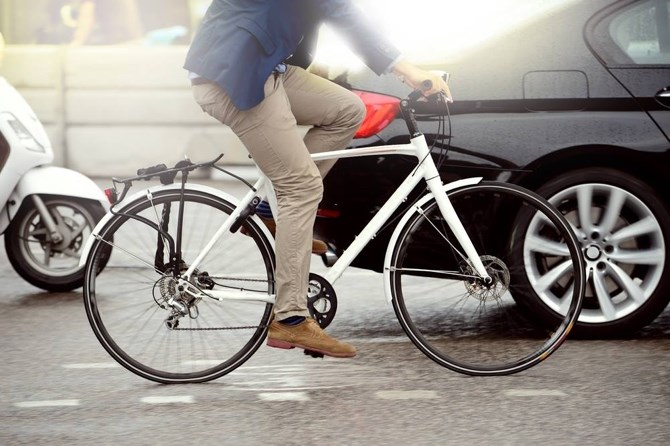
Image Credit: Shutterstock
May 28, 2019 - 2:00 PM
KELOWNA - Darren Schlamp doesn’t need a special week to get him to cycle to work.
The president of the Kelowna Area Cycling Coalition rides 11 kilometres almost every day – winter and summer – each way to his job and back.
And, as both a cyclist and president of the coalition, he’s got a good handle on whether Kelowna is a bike friendly city or not.
“It’s a relative thing,” Schlamp said. “It’s a better place than it was five years ago but, we’re nowhere near Vancouver let alone leading international cities, but it’s like a breath of fresh air compared to the Westside.”
He used to live on the Westside and commuted by bus, noting that, until incorporation in 2007, the Westside was under provincial jurisdiction so there were no bike lanes. That city has a lot of catching up to do.
While Kelowna is improving, it also has a long way to go.
“There are improvements that have happened but there are things that could have been done so much better and things that were overly expensive,” he said. “I don’t think it’s improving quick enough to meet the goals in the pedestrian master plan or our climate change objectives. Are we at the point where anyone can feel safe sending their eight-year-olds or 10-year-olds off on a bike to go to school? No.”
May 27 to June 2 is Bike to School and Work Week, which is an effort to get more people out on two wheels.
In his own workplace, Schlamp has seen it grow from zero commuters to two full-time and two part-time commuters over the last five years.
Improvements he’s seen include more separated bike paths, more bike lanes painted onto streets and better snow clearing in the winter.
On the other hand, he doesn’t understand why so much money – he estimates $5,000 per metre - was spent on the road separated bike paths along Ethel Street.
The driving lanes were also supposed to be narrowed, which is a cheap way to slow down drivers, he said, but someone in City Hall figured the roadway would be too narrow for snow plows to pass each other going in opposite directions so the lanes were made wider.
“They designed a road to be less safe because, once in a decade, you might have two snowplows going in the opposite direction,” he said.
That’s part of the mindset that needs to be broken through at City Hall. While many of the staff he deals with are supportive, they face a lot of inertia where some officials are unwilling to look at things in a new, cycle-friendly way.
He refers to Ethel Street bike path as an expensive "showpiece.” That was a project done in conjunction with sewer upgrades, but Schlamp argued it did not need concrete sidewalks and fancy landscaping. An asphalt path would have been cheaper.
He said that money could have been better spent making more connections, not only between different cycling routes – such as the Rail Trail and Mission Creek Greenway - but also between bike paths or lanes on the same street.
He cites Gordon Drive as one example where there are either separate paths or painted bike lanes from the Mission to Springfield where the bike lanes – and even room to ride – disappear. That forces cyclist to ride an extra kilometre or two in order to safely make their commute.
On the provincial front, lowering the maximum speed limit on residential streets to 30 km/h would greatly reduce the severity of injuries from car-cycle collisions.
B.C. Medical Health Officer Perry Kendall made that recommendation in 2016 citing, for example, the fact that 90 per cent of pedestrians survive a collision with a car at 30 km/h while only 20 per cent survive when hit by a car travelling at 50 km/h.
Vancouver is looking at instituting that speed limit on a trial basis.
The City of Kelowna has 25 counters around the city that can differentiate between cyclists and pedestrians.
“All told, the counters suggest that there are 1,000 to 2,000 bikes heading downtown each day in the summer," Schlamp said, noting the numbers are showing increases faster than the rate of population growth.
The only way to get the city to make cycling a higher priority is to get more people out on their bikes. That will also make them more visible to the motorized traveller.
“There is safety in numbers,” Schlamp said.
To contact a reporter for this story, email Rob Munro or call 250-808-0143 or email the editor. You can also submit photos, videos or news tips to the newsroom and be entered to win a monthly prize draw.
We welcome your comments and opinions on our stories but play nice. We won't censor or delete comments unless they contain off-topic statements or links, unnecessary vulgarity, false facts, spam or obviously fake profiles. If you have any concerns about what you see in comments, email the editor in the link above.
News from © iNFOnews, 2019